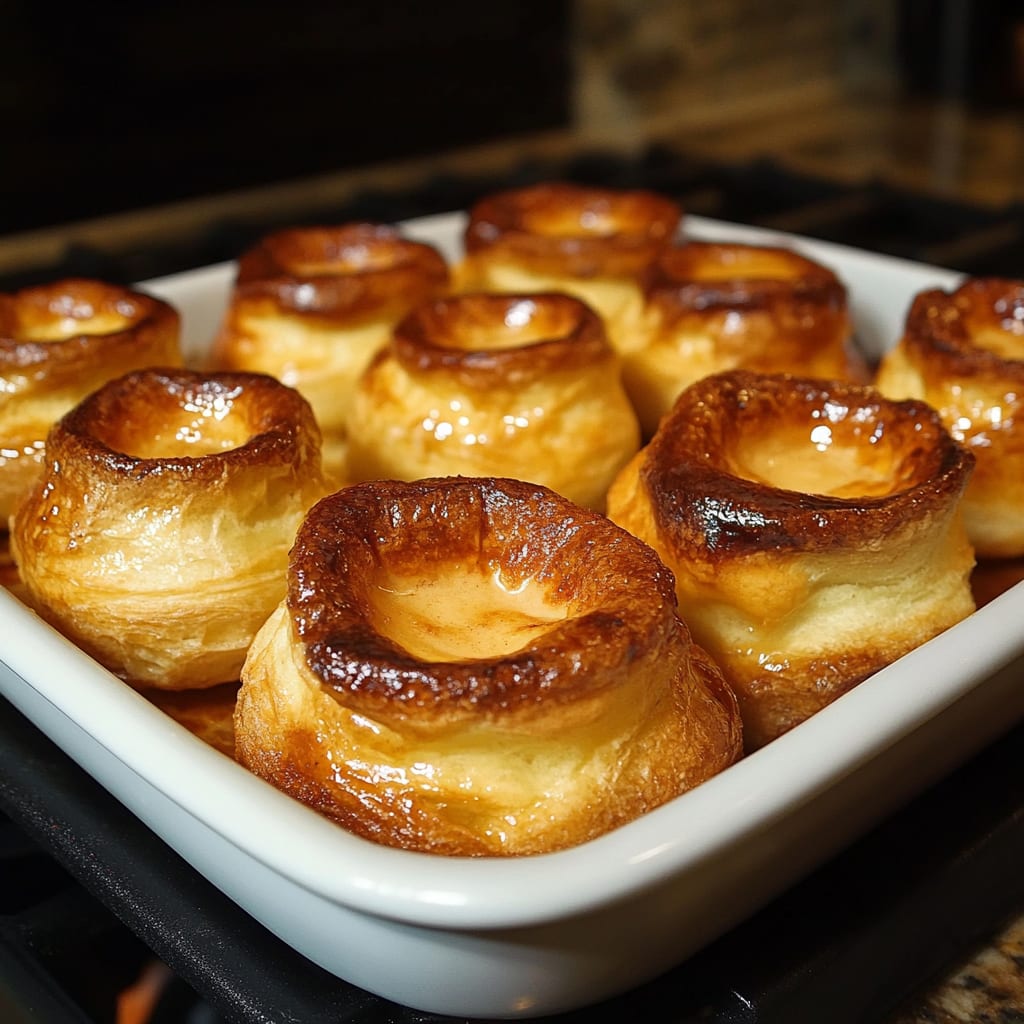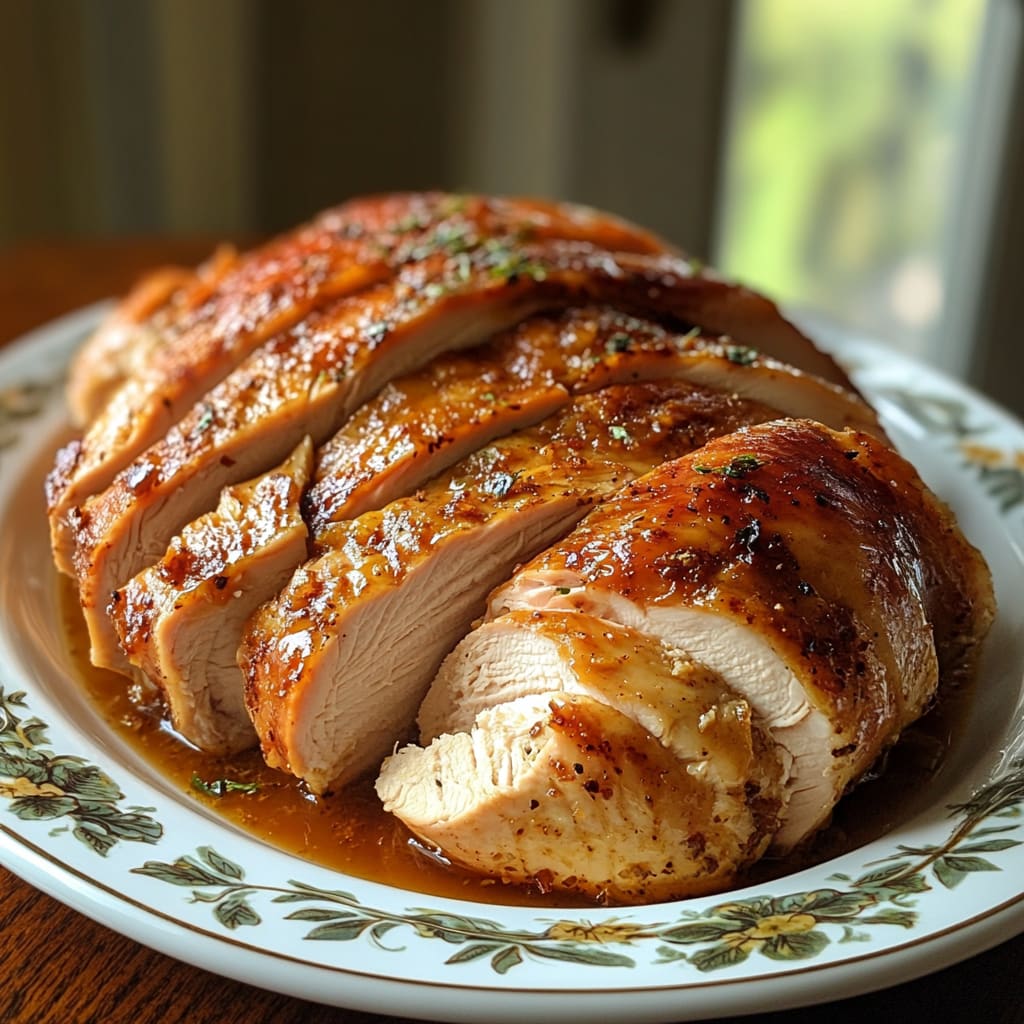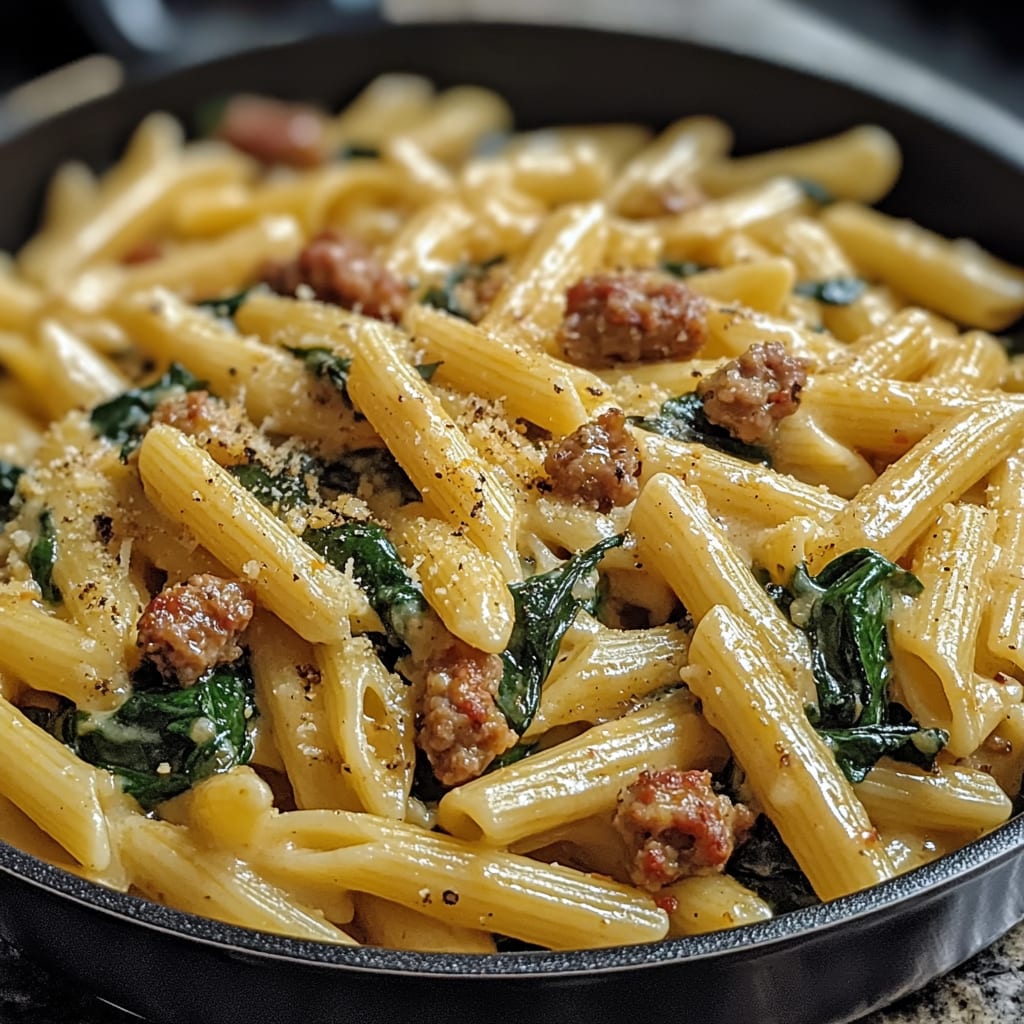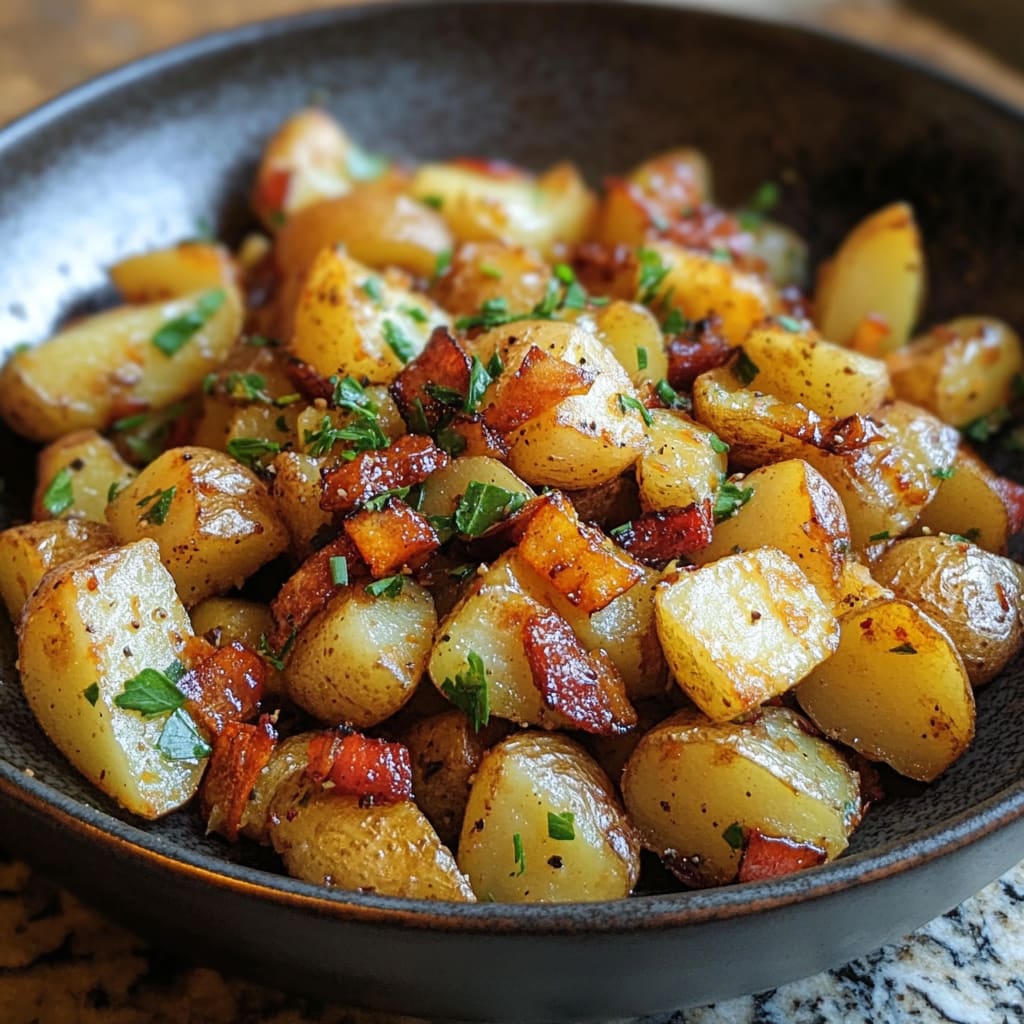The irresistible aroma of Yorkshire puddings rising in the oven signals Sunday dinner perfection has begun. These golden, crispy-edged poufs with their soft, custardy centers are the quintessential British accompaniment that transforms an ordinary roast into a proper feast. Dating back to 18th century England, Yorkshire puddings have earned their place as a beloved tradition for good reason – they’re remarkably simple yet spectacularly impressive. You’ll learn how to create perfectly risen, hollow-centered Yorkshire puddings every time with just four basic ingredients and some crucial timing techniques.
Why You’ll Love This Recipe
These classic Yorkshire puddings deliver consistent results with minimal effort, making them perfect for both novice and experienced cooks. The contrast between the crispy, golden exterior and the soft, slightly eggy interior creates a texture sensation that’s utterly irresistible when paired with savory gravy. Unlike store-bought alternatives, homemade traditional Yorkshire pudding rises dramatically in the hot oven, creating impressive towers with natural wells perfect for holding rich gravy.
The simple batter can be prepared ahead of time (in fact, it benefits from resting!), allowing you to focus on other elements of your meal. The versatility of these puddings means they complement everything from Sunday roast beef to weeknight sausages. Best of all, they use pantry staples you already have on hand, making them an economical way to elevate any meal from ordinary to extraordinary.
Ingredients
For perfect Yorkshire puddings (makes 12):
- 4 large eggs (room temperature)
- 1 cup (240ml) whole milk (room temperature)
- 1 cup (125g) all-purpose flour
- 1/2 teaspoon salt
- 3 tablespoons beef drippings, lard, or vegetable oil (for the pan)
The key to exceptional Yorkshire batter lies in using room temperature ingredients, which helps create a smooth mixture that rises beautifully. Eggs provide structure and lift, while whole milk adds richness. Traditional recipes call for beef drippings for authentic flavor, but vegetable oil works well for a vegetarian version. All-purpose flour creates the perfect structure – avoid self-rising flour as it will produce different results. The resting period allows the gluten to relax and the flour to fully hydrate, resulting in lighter puddings.
Pro Tips
First, temperature contrast is absolutely crucial for dramatic rising. Your batter should be cold or room temperature while your oil must be smoking hot (425°F/220°C) before adding the batter. This temperature shock creates the steam that makes the puddings puff up immediately. Let your pan preheat in the oven for at least 10 minutes until the oil is shimmering.
Second, resist the urge to open the oven door during the first 20 minutes of baking. The sudden temperature drop can cause your Yorkshire puddings to collapse. Additionally, ensure your oven is properly calibrated – even a 25°F difference can affect results dramatically.
Finally, the batter benefits greatly from resting time. For best results, make your batter at least 30 minutes (and up to 24 hours) before baking. This allows the gluten to relax and the flour to fully absorb the liquid, resulting in a lighter texture and better rise. A smooth, lump-free batter of pouring cream consistency is your goal.

Instructions
Step 1: Prepare the batter
In a large bowl, whisk the eggs until light and frothy. This aeration helps create lift in your Yorkshire puddings. Gradually add the milk while continuing to whisk. Sift in the flour and salt, then whisk vigorously until completely smooth with no lumps remaining. The batter should have the consistency of heavy cream – not too thick or too thin. Transfer to a pitcher for easy pouring later, cover, and let rest at room temperature for at least 30 minutes (or refrigerate overnight).
Step 2: Preheat oven and pans
Position a rack in the middle of your oven and preheat to 425°F (220°C). This high temperature is non-negotiable for proper rising! Place your muffin tin or Yorkshire pudding tray in the oven to heat up. Once hot, carefully remove the pan and add approximately 1/4 teaspoon of beef drippings or oil to each cup. Return to the oven for 10 minutes until the fat is smoking hot.
Step 3: Fill and bake
When your fat is sizzling hot, remove the pan from the oven and quickly pour the batter into each cup, filling them about halfway. Work rapidly so the pan doesn’t cool down. Immediately return to the oven and bake for 20-25 minutes without opening the door. Your Yorkshire puddings will dramatically rise and turn golden brown with crisp edges and hollow centers.
Step 4: Serve immediately
For the crispiest results, serve your Yorkshire puddings straight from the oven. If you must wait, place them on a wire rack instead of a plate to prevent soggy bottoms. They’re traditional with roast beef and gravy, but delicious alongside any main course that has a sauce or gravy to catch in their hollow centers.
Variations
Sweet Yorkshire Puddings: Transform this savory classic into a dessert by adding 1 tablespoon of sugar and 1 teaspoon of vanilla extract to the batter. Once baked, fill with fresh berries and a dollop of whipped cream or a drizzle of chocolate sauce. These sweet versions make a stunning brunch option or unexpected dessert.
Herbed Yorkshire Puddings: For an aromatic twist, add 1 tablespoon of finely chopped fresh herbs like thyme, rosemary, or chives to the batter just before baking. These herb-infused puddings pair beautifully with chicken dishes or vegetarian meals.
Gluten-Free Yorkshire Puddings: Substitute the all-purpose flour with a good quality cup-for-cup gluten-free flour blend. The technique remains the same, though gluten-free versions may not rise quite as dramatically. Adding 1/4 teaspoon of xanthan gum can help improve their structure.
Storage and Serving
Yorkshire puddings are best enjoyed immediately after baking when they’re at their crispiest, but leftovers can be stored in an airtight container in the refrigerator for up to 2 days. To reheat, place them in a 350°F (175°C) oven for 5-7 minutes until crisp again. They can also be frozen for up to a month – simply reheat from frozen in a hot oven for about 10 minutes.
For traditional serving, pair your puddings with roast beef and rich gravy. However, they’re incredibly versatile: fill them with creamy chicken stew for individual pot pies, use them as the base for a twist on eggs Benedict, or create a miniature version as appetizers filled with smoked salmon and crème fraîche. In Yorkshire itself, large puddings were historically served as a first course with gravy to fill up diners before the more expensive meat course.
FAQs
Why didn’t my Yorkshire puddings rise?
The most common culprit is oil that wasn’t hot enough. Ensure your oil is smoking before adding batter. Also check that your oven temperature is accurate and that you didn’t open the door during the first 20 minutes of baking.
Can I make the batter ahead of time?
Absolutely! In fact, making the batter 30 minutes to 24 hours ahead improves the texture. Just refrigerate and bring back to room temperature before baking.
Why are my Yorkshire puddings heavy or doughy in the middle?
They likely needed more baking time. The inside should be hollow, not doughy. Also check that your batter wasn’t too thick – it should be the consistency of heavy cream.
Can I use a different pan if I don’t have a muffin tin?
Yes! Traditionally, Yorkshire puddings were made in one large pan. Any oven-safe dish that can be preheated with oil will work, though cooking times may vary.
Why do some recipes use water instead of milk?
Water creates a lighter, crisper pudding, while milk yields a richer flavor and color. Try half water, half milk for a balance of lightness and richness.
Conclusion
This Yorkshire Pudding Recipe is comfort food at its finest — crispy on the outside, soft in the middle, and the perfect vessel for soaking up every last drop of gravy. It’s the kind of dish that transforms an ordinary Sunday dinner into a memorable family tradition. While simple in ingredients, mastering these golden puffs brings a special satisfaction that only comes from perfecting a classic recipe. Whether paired with your holiday roast or enjoyed as part of a weeknight dinner, these Yorkshire puddings prove that sometimes the simplest foods are the most delicious.
Print
Yorkshire Puddings Recipe
- Prep Time: 10 minutes
- Cook Time: 20-25 minutes
- Total Time: 30-35 minutes
- Yield: 12 puddings 1x
- Category: Dinner
- Method: Baking
- Cuisine: Americaine
Description
Indulge in fluffy Yorkshire puddings with crispy edges. Perfect for Sunday roast with beef drippings. Easy, comforting, crowd-pleasing.
Ingredients
- 4 large eggs (room temperature)
- 1 cup (240ml) whole milk (room temperature)
- 1 cup (125g) all-purpose flour
- 1/2 teaspoon salt
- 3 tablespoons beef drippings, lard, or vegetable oil (for the pan)
Instructions
- Step 1: Prepare the batter In a large bowl, whisk the eggs until light and frothy. This aeration helps create lift in your Yorkshire puddings. Gradually add the milk while continuing to whisk. Sift in the flour and salt, then whisk vigorously until completely smooth with no lumps remaining. The batter should have the consistency of heavy cream – not too thick or too thin. Transfer to a pitcher for easy pouring later, cover, and let rest at room temperature for at least 30 minutes (or refrigerate overnight).
- Step 2: Preheat oven and pans Position a rack in the middle of your oven and preheat to 425°F (220°C). This high temperature is non-negotiable for proper rising! Place your muffin tin or Yorkshire pudding tray in the oven to heat up. Once hot, carefully remove the pan and add approximately 1/4 teaspoon of beef drippings or oil to each cup. Return to the oven for 10 minutes until the fat is smoking hot.
- Step 3: Fill and bake When your fat is sizzling hot, remove the pan from the oven and quickly pour the batter into each cup, filling them about halfway. Work rapidly so the pan doesn’t cool down. Immediately return to the oven and bake for 20-25 minutes without opening the door. Your Yorkshire puddings will dramatically rise and turn golden brown with crisp edges and hollow centers.
- Step 4: Serve immediately For the crispiest results, serve your Yorkshire puddings straight from the oven. If you must wait, place them on a wire rack instead of a plate to prevent soggy bottoms. They’re traditional with roast beef and gravy, but delicious alongside any main course that has a sauce or gravy to catch in their hollow centers.
Notes
Fresh ingredients will always yield the best flavor results.
Nutrition
- Serving Size: 1 pudding
- Calories: 176
- Sugar: 1g
- Sodium: 185mg
- Fat: 10g
- Saturated Fat: 3g
- Unsaturated Fat: 6g
- Trans Fat: 0g
- Carbohydrates: 16g
- Fiber: 1g
- Protein: 5g
- Cholesterol: 76mg








